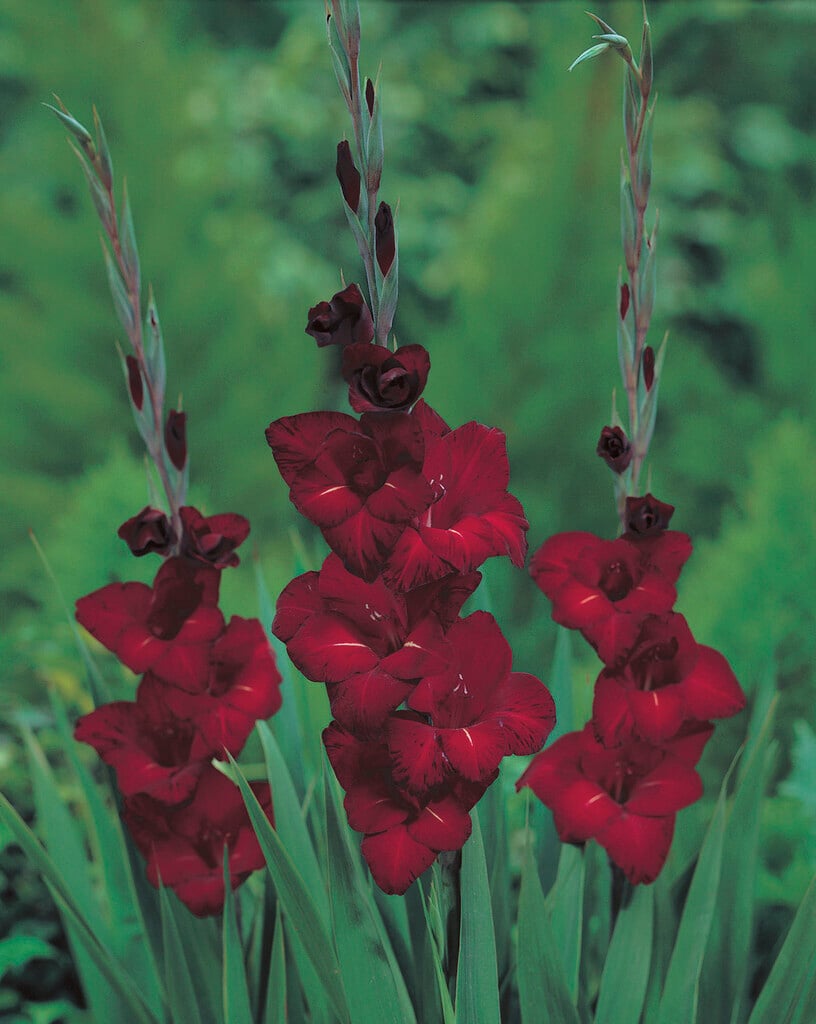Gladiolus 'Arabian Night'
sword lily 'Arabian Night'
A dramatic gladiolus, height around 1-1.5m, with green sword like leaves and a flower spike with around 10-15 flower buds. The flowers have a rich velvet appearance and are a deep wine red colour. Sumptuous and striking blooms for the summer garden

Size
Ultimate height
1–1.5 metresTime to ultimate height
2–5 yearsUltimate spread
0.1–0.5 metresGrowing conditions
Moisture
Moist but well–drained, Well–drainedpH
Acid, Alkaline, NeutralColour & scent
| Stem | Flower | Foliage | Fruit | |
| Spring | Green | |||
|---|---|---|---|---|
| Summer | Red | Green | ||
| Autumn | Green | |||
| Winter |
Position
- Full sun
- Partial shade
Aspect
South–facing or West–facing or East–facing
Exposure
Sheltered Hardiness
H3Botanical details
- Family
- Iridaceae
- Native to GB / Ireland
- No
- Foliage
- Deciduous
- Habit
- Columnar upright
- Potentially harmful
- Ornamental bulbs, not to be eaten. Wear gloves and other protective equipment when handling. Pets: Harmful if eaten. For further information and contact numbers regarding pets, see the HTA guide to potentially harmful plants
- Genus
Gladiolus are cormous perennials with fans of sword-shaped or linear leaves and spikes of funnel-shaped flowers
- Name status
Unresolved
How to grow
Cultivation
Grow in fertile, well-drained soil in full sun, planting the corms 15cm deep in spring, on a bed of sharp sand to aid drainage; in frost-prone areas, lift when the leaves turn yellow-brown, and store the new corms in a dry, frost-free place until the following spring; in milder areas, add a thick dry mulch over winter
Propagation
Propagate by division, separating cormlets when dormant
Suggested planting locations and garden types
- Cottage and informal garden
- City and courtyard gardens
- Sub-tropical
- Flower borders and beds
- Cut flowers
- Wall side borders
Pruning
No pruning required
Pests
May be susceptible to gladiolus thrip, aphids and slugs
Diseases
May be susceptible to gladiolus corm rot, grey moulds (Botrytis), Fusarium bulb rot, gladiolus core rot, gladiolus dry rot, gladiolus scab and neck rot, fungal leaf spot, and virus diseases
Get involved
The RHS is the UK’s gardening charity, helping people and plants to grow - nurturing a healthier, happier world, one person and one plant at a time.